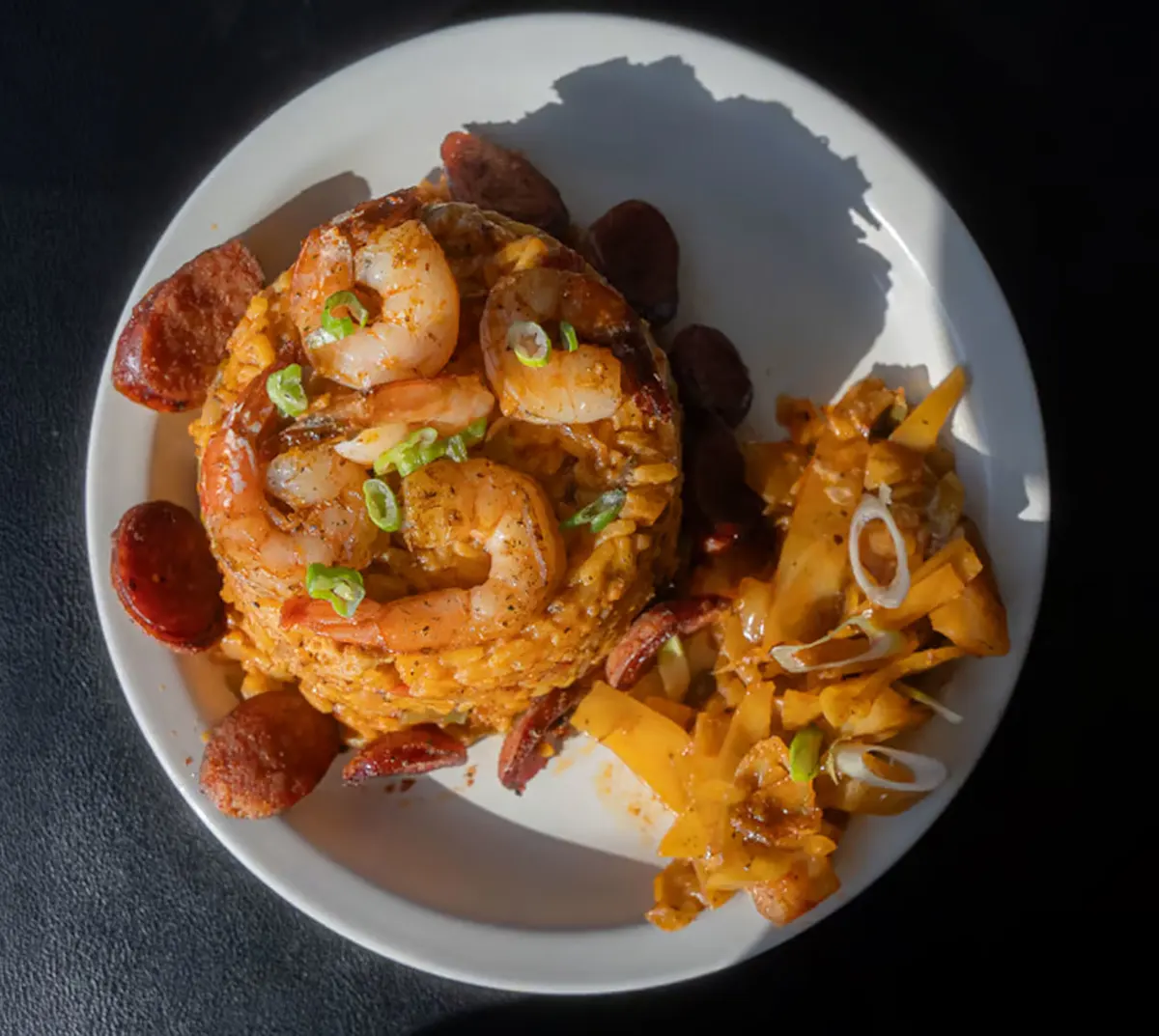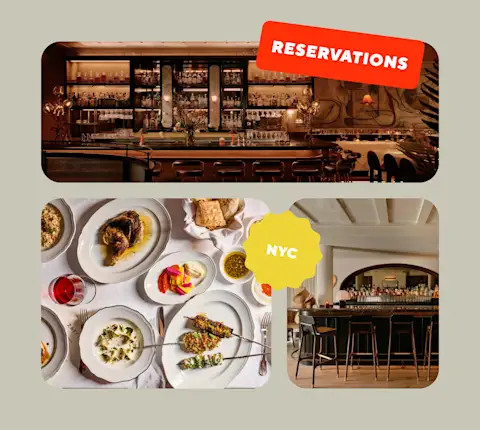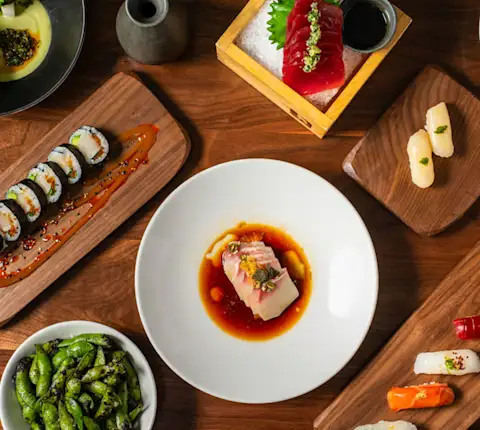*This article includes mentions of merchants or brands who are partners of DoorDash, and DoorDash may receive a commission if you choose to make a purchase from these merchants or brands.
On August 3, Alfio Sciacca taped a hand-written note to the front door of his Chicago restaurant, Amici. It read, “Sorry, but as of 3:48 p.m. we have sold out.” Every day now this modest storefront carryout has to close early. Customers start forming a line outside well before the restaurant’s noon opening with hopes of snagging one of its signature items, the stuffed and deep-fried rice balls called arancini. In addition to the traditional Sicilian version filled with meat ragù, peas, and a melty blob of mozzarella, Sciacca also creates arancini that reflect the cultural melting pot of Chicago — ones filled with chicken tikka masala, Mexican mole, or Ethiopian doro wat.
“I’m very fortunate, and I love what I do,” says Sciacca, 60, one morning from his small kitchen where he had been hand forming rice balls since 3 a.m. It hadn’t always been like this. After opening the restaurant in late 2023, he had worked alone and sold at most 30 arancini a day for nearly 10 months. He didn’t know if he could make rent each month. The business was so close to faltering that his daughter, Surya, put up a Go Fund Me page. Then Keith Lee came to town.
Order from AmiciLee, a Las Vegas-based food critic who has become a massive star on YouTube and TikTok, visits restaurants throughout the country with his wife, Ronni. Lee paid an anonymous visit to Amici and tried a variety of arancini. So impressed was Lee with Sciacca’s original cooking and the gumption of his one-man show that he returned to the restaurant, introduced himself, and gifted the business $4000 — $1000 as a generous tip and $3000 to pay the meals for however many diners would follow him there. They came and kept coming long after the money ran out. Arancini were suddenly in demand, and so was Sciacca — a veteran of many kitchens who never could have predicted his life trajectory.
A native of Sicily, Sciacca studied to be a schoolteacher and dreamed of playing jazz trombone. He was gigging as a musician in Paris when he met his ex-wife, an American who convinced him to follow her back to Chicago. America was a land of opportunity for him — just not the kind he was expecting.
“When I came to this country there really wasn’t much work for a musician,” Sciacca recalls. “Jazz was kind of dying in those days. But then I heard about this guy who was about to open a restaurant downtown.”
Topo Gigio was one of the early restaurants that transformed a block of historic townhomes and storefronts in Chicago’s Old Town neighborhood into a dining and entertainment district. Sciacca got a job there as a busboy. Two weeks into the job the owner fired the chef and asked him if he could cook. Sciacca responded, “I know how to eat, but I don’t know how to cook.” That was apparently enough.
After opening the restaurant in late 2023, he had worked alone and sold at most 30 arancini a day for nearly 10 months. He didn’t know if he could make rent each month. Then Keith Lee came to town.
Sciacca learned to cook over late-night phone conversations with his grandmother in Sicily. He tested and refined the recipes on guests and sought their feedback, which was positive. After six months, he received a rave review from a powerful critic at the Chicago Sun-Times, and his career was on its path.
An injury that required mouth surgery put his trombone-playing days behind him, so Sciacca embraced his new life as an in-demand Italian chef. He worked at restaurants throughout the city and decamped to the suburbs to be closer to his ex-wife’s family. Yet when the marriage ended and he knew he'd have to provide for their three kids, he needed a steady and well-paying source of income. He accepted a job as culinary manager for a senior living community. “That was such a drag,” he recalls. “Working for the corporate world was crazy. It wasn’t me.”
After 35 years in the States, Sciacca craved starting his own project — something small and personal where he could express himself through a simple menu. As the paterfamilias of a bicultural and biracial family, he particularly wanted his food to encourage guests to try something new, to open their palates to the pleasures of unfamiliar flavors.
When the idea to focus the menu on arancini came to him, “I thought about how I could create a dish that is affordable but also be an introduction to a different culture,” he says. “It’s a quick meal, and you know, every culture has its own rice.”
Sicilians, for example, would opt for saffron rice, but what was to stop him from encasing jerk chicken in rice seasoned with allspice and other warm seasonings to play against the spicy heat of the filling?
Sciacca opened the restaurant in a wedge-shaped storefront set between two angled streets in a part of Chicago known for its music venues, gay bars, and wide variety of inexpensive international dining options. “It was a huge struggle to get people to come in,” he recalls. “I was getting so discouraged.”
He laid off all his staff and worked the restaurant alone, scurrying from the kitchen to the service counter whenever an order came in.
Surya, his youngest daughter, not only went to Go Fund Me to try and keep her dad’s business afloat, she became his de facto social media manager. “She put up a TikTok account and slowly things started moving in the right direction,” says Sciacca. “She was also messaging and sending emails constantly to Keith Lee. I think she was bugging him for a couple of months,” he recalls with a laugh. Whatever she did, it brought the masses to Sciacca’s inventive take on a staple of Sicilian cuisine.
The name “arancini” means “little oranges,” and if you happen to be in the Sicilian capital of Palermo and order one, you’ll see why. Round, nubbly and orangey-golden in their fried breadcrumb jackets, they look like Sicily’s most famous fruit. If, however, you go looking for arancini in the eastern port town of Catania, they’ll be conical rather than round, tapering from a wide base to a pointier top. This shape pays homage to Catania’s most famous nearby sight, Mt. Etna.
Sciacca, a proud son of Catania, makes the conical ones, which stand about four inches tall. One costs $8 and comes with a side of fries, pasta salad, or corn salad for the cheapest and most satisfyingly carby lunch in town. Of course no one can stop at just one arancino. Maybe they won’t be able to finish all their fries, but the pleasure of carryout from Amici lies in cracking open the clamshell box and seeing two golden mountains of rice, each with an identifying paper flag on top and a customized dipping sauce.
Since Lee’s visit, Sciacca has brought on new staff to wrangle the crowds. Not only does he have to come in before the crack of dawn every day to cook, he has to make time for television interviews and other appearances that have accompanied his newfound fame. For him, it’s a good problem to have.
There isn’t a dud in the bunch. While the chicken tikka masala arancino with its curry dipping sauce never disappoints, nothing quite beats the original with its savory meat and cheese filling. Keith Lee said it tastes like lasagna, which is an apt description.
Since Lee’s visit, Sciacca has brought on new staff to wrangle the crowds. Not only does he have to come in before the crack of dawn every day to cook, he has to make time for television interviews and other appearances that have accompanied his newfound fame. For him, it’s a good problem to have. He credits his support system for helping him get here — his three daughters and his second wife, whom he has been married to for 25 years. “How fortunate for me that I have a very, very good family,” he says with pride before ending the conversation. It was 10 in the morning, and he had hundreds of arancini to make before noon.
Order from Amici




